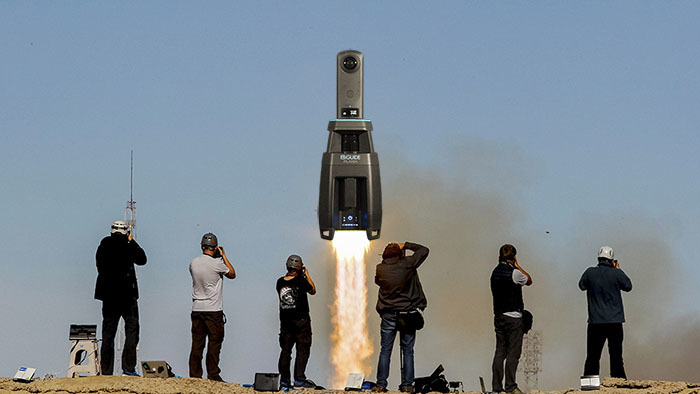iGUIDE Video: How to Fix Vertical Lines in Real Estate Photos15605
Pages:
1
 WGAN Forum WGAN ForumFounder & WGAN-TV Podcast Host Atlanta, Georgia |
DanSmigrod private msg quote post Address this user | |
| Video: How to fix vertical lines in your photos - iGUIDE Shorts | Video courtesy of iGUIDE YouTube Channel | 23 July 2021 Transcript (Video Above) [Planitar (iGUIDE) Marketing Manager Chris White | @Chris_iGuide] What you can see here is that there are some vertical lines in this image. Those vertical lines are what I'm referring to, but they're really representing the edge of the shower enclosure there, and then you've got the bulkhead that's holding up that built-in shelf on the left. But if you start looking at images in terms of lines, you're going to see the houses have tons of them, there are lots and lots of lines that are supposed to be vertical lines. In real life, when you look at them, they're vertical. You've got horizontal lines, so those are lines that are typically the intersection. I don't know if you guys can see my cursor though between the wall and the ceiling, those can be horizontal lines. Let's not worry about the horizontal lines for now, but the vertical lines are often going to what's called converge either below the frame or above the frame. You can see here that with the camera pointed in this direction, however it was set up on-site, the vertical lines are going to converge toward the bottom of the screen. That means that the cameras, I believe it's angled. If you angle your camera down, all the vertical lines in the image are going to point toward the bottom of the screen. If you were to angle your camera up, all the vertical lines are going to point toward the top of the screen. You can imagine this if you're standing in front of a house and you point your camera up at it, the house is going to go to a point and the top is going to be small and the bottoms going to be big. Your goal as a professional real estate photographer is to eliminate this effect, for the most part, and use it to your advantage occasionally when it suits you. Most of your photos should look like this, nice and level with the, again, the camera level, we're leveling the camera here, but so that all the vertical lines are perfectly vertical. This is that consistency that I was talking about. Anytime you create an image, you are communicating something to someone non-verbally. Just as an aside, as a general concept, when you're creating an image for real estate, and you do things like point the camera slightly downward, you're communicating to the person who's viewing that image, that that camera is pointed downward on purpose to look at something. If your vertical lines are converging toward the bottom or the top of the screen, you're telling people to look up or down, but most of the time that's unintentional. That's why I said you really want to correct this, but also it's more take control because there are some times where you would want that. I'll give you an example. You're standing on one of those little princess balconies that overlooks a living room, but that's a two-story living room or whatever. In that scenario, you would point the camera down because that makes it the thing you're looking at important, you're saying look down because you are. The general goal though for almost all photographs is to avoid that unless you really need to use that for something because it doesn't communicate anything here. We don't want to be looking at the floor, we want to show the room as it is and we don't want to distract from that. In this scenario, it's going to be very similar to the previous one, leveling your camera on site is the best thing you can do because it's going to do 90 percent of the work for you. Then in post, what you would do if your verticals are not perfect and they rarely are to be honest, you should be spending a lot of time fixing these if you can, you're going to want to use the vertical transformation tool. It's different depending on the software that you use, but I'll tell you what it does in general. It's going to pinch the bottom or the top of the image, this would be our example here. We've got our vertical lines converging toward the bottom of the screen. If I were to use the vertical transform tool in say Photoshop or Lightroom, I would squish or pinch the top of the frame to bring those vertical lines back to straight. I don't see any questions yet, but I'm guaranteed going to get this one. Is this process automated is usually the question, and the answer is yep, for sure. Photoshop and Lightroom both have little auto-align buttons that will attempt to do this for you automatically. They suck, so your mileage may vary. It might work for some images but not for others, so give it a try. If it works, great, if it doesn't you'll just have to do it manually using the vertical transform tool. --- Video: WGAN-TV 3 Introduction to iGUIDE PLANIX Camera Kit (and Demo) with Planitar (iGUIDE) Marketing Manager Chris White (@Chris_iGuide) | Thursday, 18 March 2021  iGUIDE PLANIX Camera Kit launched Monday, 1 March 2021. Video: iGUIDE Virtual Showing | Video courtesy of iGUIDE YouTube Channel | 16 June 2020 Video: IGUIDE 3D Virtual Tour & Camera System - Floor Plans, Room Dimensions, Square Footage | Video courtesy of the iGUIDE YouTube Channel | 1 March 2021 Video: iGUIDE Viewer | Video courtesy of iGUIDE YouTube Channel | 21 February 2021 iGUIDE PLANIX Sample 3D Tour and with Interactive Floor Plan courtesy of iGUIDE | 2D Schematic Floor Plans https://youriguide.com/pla_1_608_jones_st_e_st_marys_on/doc/floorplan_imperial_en.pdf WGAN-TV Live at 5: iGUIDE PLANIX Camera Kit | Intro, Demo and FAQs WGAN Forum Related Discussions ✓ iGUIDE PLANIX is the 3D Camera Kit Matterport Wished It Created ✓ BIG NEWS!! New iGUIDE camera available in April. ✓ Transcript: WGAN-TV | Introduction to iGuide: a Deep-Dive Demo & Discussion ✓ All WGAN Forum discussions tagged: iGUIDE | iGUIDE PLANIX ✓ Free WGAN Cheat Sheet: Which Virtual Tour Platform is Best (for Me)? ✓ WGAN MarketPlace: iGUIDE |
||
| Post 1 • IP flag post | ||
Pages:
1This topic is archived. Start new topic?

















